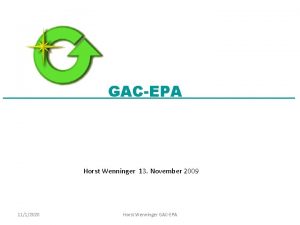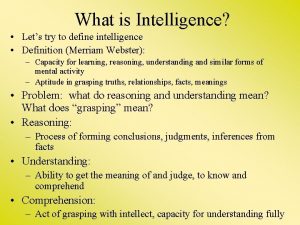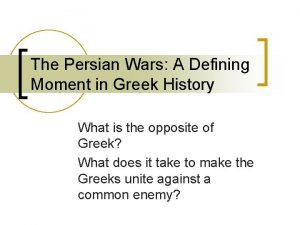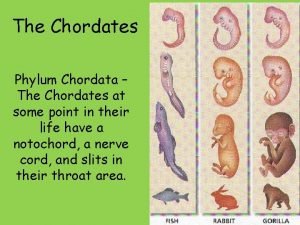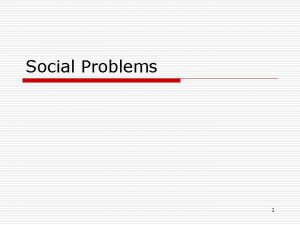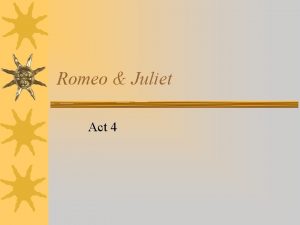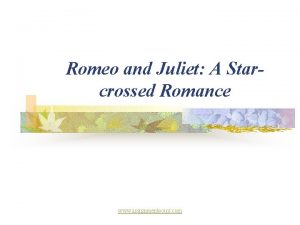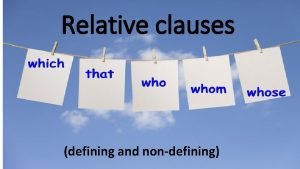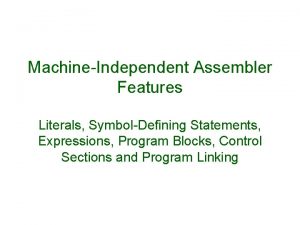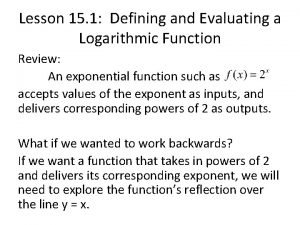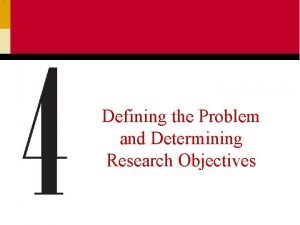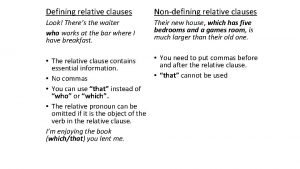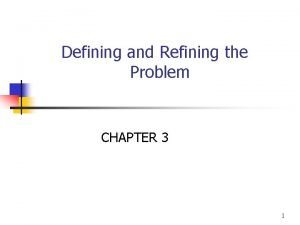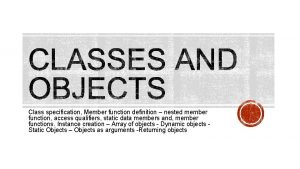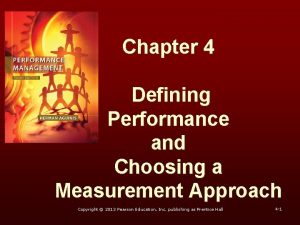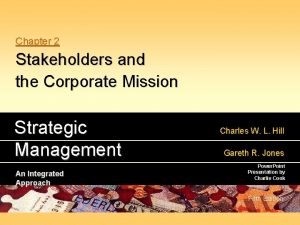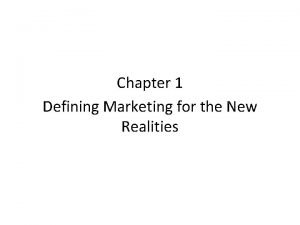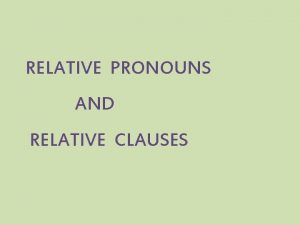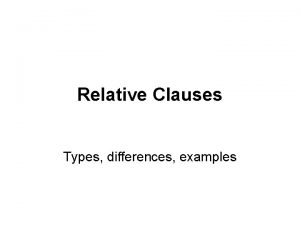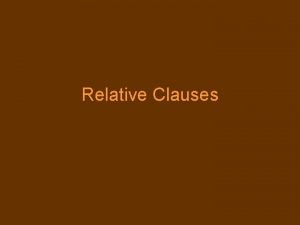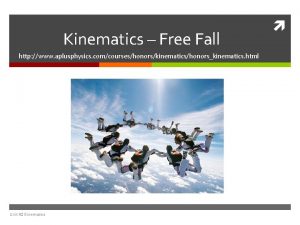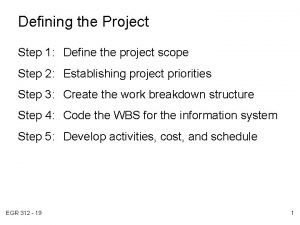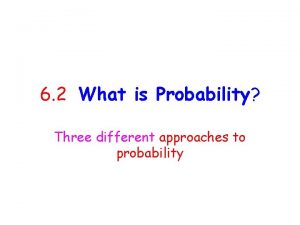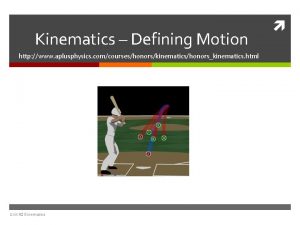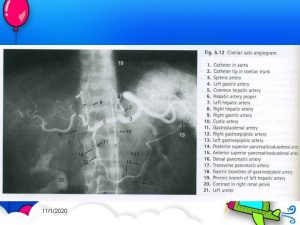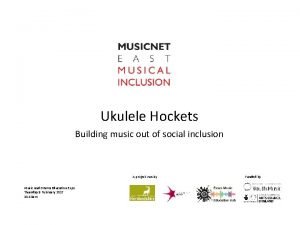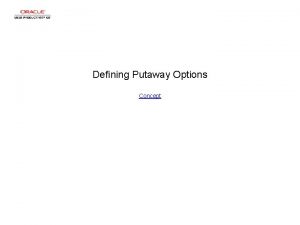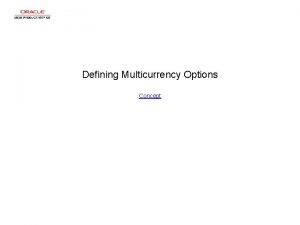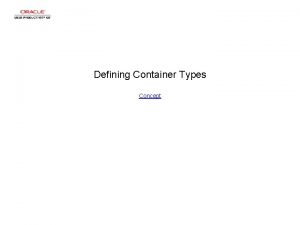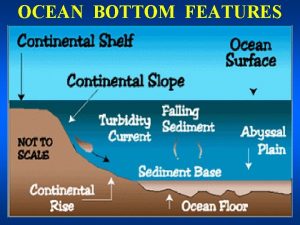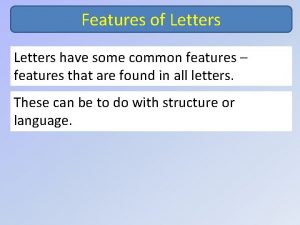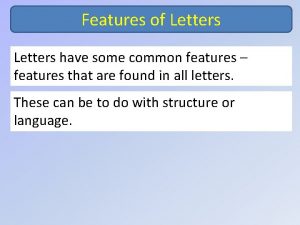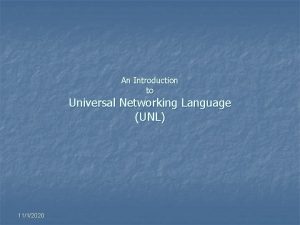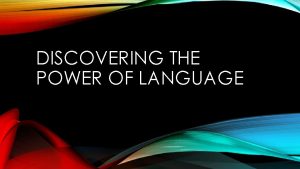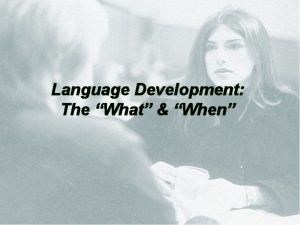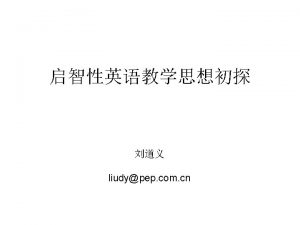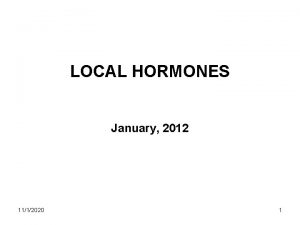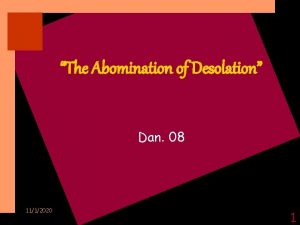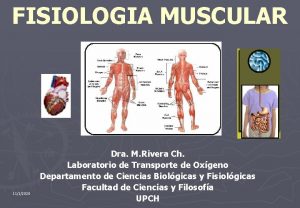1112020 Language What is language Hockets defining features











































- Slides: 43


11/1/2020 • Language » What is language? ◊ Hocket’s defining features ◊ Five levels of analysis ◊ Whorf’s hypothesis » Speech perception ◊ Acoustic Phonetics ◊ Articulatory Phonetics ◊ Top-down processes Study Questions. • Compare and contrast animal communication with human language. Use Hockett’s defining features to underscore the distinction. • Compare and contrast acoustic and articulatory phonetics

Language • Language vs. communication » Continuity theory (Aitchison, 1983) ◊ Human language is a sophisticated calling system not fundamentally different from animal cries and calls – Mating and other ritualized displays

Language • Language vs. communication » Continuity theory (Aitchison, 1983) – Bee hive communication

Language • Language vs. communication » Continuity theory (Aitchison, 1983) – Ververt monkeys “chutter” -> cobra; “rraup” -> eagle; “chirp” -> lion

Language • Language vs. communication » Continuity theory (Aitchison, 1983) – Parrots

Language • Language vs. communication » Problems with continuity theory ◊ Apparent specifity – Ververt Monkeys “chirps” for eagles as well as lions • Intensity of threat or symbollic representation – Intentionality • Often difficult to infer the intentions of animal communication • E. g. , Whale songs

Language • Some definitions » Language ◊ A shared symbolic system for communication. » Linguistics ◊ Concerned with the characteristics, functions and structure of language. » Psycholinguistics ◊ Concerned with language as it is learned and used by people.

Language • Hockett’s linguistic universals » (Defining) features or characteristics that are common to all known languages. » Less essential design features ◊ Vocal-auditory channel – Written language developed later than spoken – ASL much later again – Essential to the evolution of language ◊ Broadcast transmission / directional reception – Transmission is public – Source can be localized by receiver

Language • Hockett’s linguistic universals » Less essential design features ◊ Transitoriness – The message fades rapidly • Must be received when transmitted • Stored by receiver ◊ Interchangeability – We are “trans-receivers” • Both receivers and transmitters • Cf. Mating rituals in birds

Language • Hockett’s linguistic universals » Less essential design features ◊ Total feedback – Speaker receives information the same time as the receiver – Allows for moment to moment adjustment ◊ Specialization – Language sounds are specialized to convey meaning – Nonlinguistic sounds may communicate meaning. . . E. g. , A growling dog but language was designed to convey linguistic meaning.

Language • Hockett’s linguistic universals » Essential design features ◊ Semanticity – Linguistic utterances convey meaning by use of the symbols used to form the utterance ◊ Arbitrariness – The connection between the symbol and the concept is arbitrary – We have few ‘true’ onomatopoeia. English: bow wow bang ribbet Arabic: haw bom -----Mandarin: wang peng gua Korean: meong ----gaegol Spanish: guau pum croac

Language • Hockett’s linguistic universals » Essential design features ◊ Discreteness – Small separable set of basic sounds (phonemes) combine to form language ◊ Duality of Patterning – Process of building an infinite set of meaningful words from a small set of phonemic building blocks

Language • Hockett’s linguistic universals » Essential design features ◊ Displacement – “A long time ago in a galaxy far, far away” – We take about things are not in the here and now – Displacement and bee hive communication ◊ Productivity – If we were bees, we would make up a new word – “palimony”, “blindsight”, “mindsight”, “Twonies” ◊ Traditional transmission – Most elements of language are passed from generation to generation – “feral” children Francois Truffaut’s Wild Child (1970)

Language • Five levels of analysis » Grammar: The complete set of rules that produce acceptable sentences and not produce unacceptable sentences ◊ Three levels – Phonology Sounds of language – Semantic or lexical Meaning – Syntax Word order and grammaticity – Semantics vs. syntax The gorpy wug was miggled by the mimsy gibber.

Language • Five levels of analysis » Two other levels (Miller, 1973) George Miller ◊ Conceptual – Analysis with reference to preexisting knowledge ◊ Belief – One’s own belief of the speaker “Mary and John saw the mountains while they were flying to Vancouver”

Language • A critical distinction Noam Chomsky » Competence: Internalized knowledge of language that fully fluent speakers have » Performance: The actual language behaviour that a speaker generates ◊ Our speaking performance is not always a good indicator of language competency ◊ Disfluencies: irregularities/ errors in speech – Lapses in memory (er…. ummm…. . er) – Distractions ◊ Linguistic intuitions – Which sounds better? I need a long, hot bath I need a hot, long bath

Language • Whorf’s hypothesis » Linguistic Relativity hypothesis: You language shapes you thoughts ◊ Language controls thought and perception » The Hopi as a timeless people » Heider (1971, 1972) ◊ Focal colours ◊ Dani Language (New Guinea) – Two words for colours: Mola (bright) & Mili (dark, cool) – Recognition memory influenced by focality » Weak vs. Strong L-R

Language • Whorf’s hypothesis » “Eskimo words for snow” (100, 200, or is it 400? !? )

Language • Whorf’s hypothesis » “Eskimo words for snow” (100, 200, or is it 400? !? ) ◊ Martin (1986) ◊ Franz Boas (1911; discussing independent vs. derived forms) – 4 ‘Eskimo’ words for snow Aput - snow on the ground; Qana - falling snow; piqsirpoq - drifting snow; qimuqsuq - snowdrift. – English words for water Liquid, lake, river, pond, sea, ocean, dew, brook, etc. > these could have been formed from the ‘root’ water > ‘Eskimos’ formed all snow related words from 4 ‘roots’

Language • Whorf’s hypothesis » “Eskimo words for snow” (100, 200, or is it 400? !? ) ◊ Whorf (1940 s) “We have the same word for falling snow, snow on the ground, snow packed hard like ice, slushy snow, wind-driven flying snow- whatever the situation may be. To an Eskimo, this allinclusive word would be almost unthinkable; he would say that falling snow, slushy snow, and so on, are sensuously and operationally different, different things to contend with; he uses different wards for them and for other kinds of snow. ” (Whorf 1940) – 7 words for snow (what about sleet, slush, hail, blizzard, etc. ? )

Language • Whorf’s hypothesis » “Eskimo words for snow” (100, 200, or is it 400? !? ) ◊ Brown (1958): Three words for snow – Only looked at the figures in Whorf’s paper! ◊ Eastman's (1975) Aspects of Language and Culture – Cites Brown: "Eskimo languages have many words for snow” (Mentions six lines later that the number was 3) ◊ Lanford Wilson's 1978 play “The Fifth of July” – 50 words for snow ◊ New York Times editorial (1984) : 100+ words for snow ◊ The Science Times (1988) – "The Eskimos have about four dozen words to describe snow and ice” ◊ Cleveland weather forecast: 200 words for snow

11/1/2020

Language • Phonology: The rules underlying production and comprehension of speech. • Phonetics: The nature of linguistic sounds. » Articulatory phonetics: Placement of the mouth, tongue, lips, etc. used to produce particular sounds. » Acoustic phonetics: Physical characteristics of speech sounds. ◊ The Speech Spectrograph

Language • Some Basics Compression » Qualitative and quantitive elements of sensory stimuli High Low

Language • The Speech spectrograph

Language • Acoustic Phonetics » Phoneme: The smallest unit of speech that if changed would change the meaning of a word. E. g. , “Pit” ----> /b/+/I/+/t/ = “bit” /p/ + /I/ + /t/ /i/ /p/+/i/+/t/ = “peat” /g/ /b/+/I/+/g/ = “pig”

Language i I e æ u U o c a e sip s zip z rip r s should z pleasure c chop j gyro yip y k kale g gale h hail h sing V p pull b bull m man w will f fill v vet q thigh o thy t tie d die n near l lear Vowels ' Consonants i heed hid bait head boot put boat bought hot sofa many

Language • Articulatory Phonetics » Three ways in which consonants differ. 1. Place of articulation – – – – Bilabial --> /p/ Labiodental --> /f/ Dental --> /Q/ Alveolar --> /z/ Palatal --> /ˆz/ Velar --> /k/ Glottal --> /h/

Language • Articulatory Phonetics » Three ways in which consonants differ. 2. Manner of articulation – – – Stops --> /b/ Fricatives --> /s/ Africatives --> /j/ Nasals --> /m/ Lateral --> /L/ Semivowels --> /r/ 3. Voicing ◊ Vibration of vocal chords

Language • Articulatory Phonetics » Voicing

Language • Articulatory Phonetics » Is speech special? ◊ Specialized neural mechanisms for perceiving speech. – Categorical perception Voice onset-time and distinguishing /d/ from /t/

Language • Articulatory Phonetics » Vowels ◊ Positioning and part of tongue – Height High (/i/ beet) Med (/e/ bait) Low (/a/ pot) – Part Front (/I/ bit) Central (but) Back (/o/ boat)

Language • The search for invariants » Distinctive features ◊ Chomsky & Halle (1968) – The Sound Pattern of English 5 groups of features ◊ Miller & Nicely ◊ Articulatory features » Problems with a simple bottom-up approach ◊ There are no periods of silence between phonemes

Language • The search for invariants » Phonemic information is presented in parallel ◊ Coarticulation ◊ E. g. Cf. /M/ in “Tim” vs. “/M/ in “mad” » We perceive them as the same, but they are different » We perceive the same sound differently according to the context ◊ E. g. : Writer vs. Rider ◊ E. g. : Insert a silence between /s/ and /i/ --> “ski” Insert a silence between /s/ and /u/ --> “spew”

Language • Top down processes » Phonemic restoration effect (Warren, 1970) ◊ Their respective legi*latures ◊ Found a *eel on the axle ◊ Found a *eel on the shoe

Language • Perceiving conversational speech » Two main problems: 1. There are no physical boundaries between words – Anna Mary candy lights since imp pulp lay thing 2. Speech is sloppy – -> Misheard Lyrics – -> This was the best buy vs. She is a bad girl

Language • Perceiving conversational speech » Two main problems:

Language What are you doing ?

Language Whad’ya doin’?

Language • Top-down processes and speech perception » Phonemic perception ◊ The Mc. Gurk Effect

Language • Top-down processes and speech perception » Sentence comprenension ◊ Miller & Isard (1963) – Participants shadow sentences: Grammatic: Bears steal honey from the hive. Semantically incorrect: Bears shoot honey on the highways. Ungrammatic: Across bears eyes honey the bill.

Language • Top-down processes and speech perception ◊ Miller & Isard (1963) – Participants shadow sentences: Grammatic: Bears steal honey from the hive. Semantically incorrect: Bears shoot honey on the highways. Ungrammatic: Across bears eyes honey the bill. – Results Gram. Nonsem. Nongram. No noise 89% 79% 56% Mod. Noise 63% 22% 3%
 1112020
1112020 Gacepa admin
Gacepa admin Example of non defining relative clause
Example of non defining relative clause Relative clauses defining and non defining
Relative clauses defining and non defining Defining and non-defining
Defining and non-defining Defining and non defining relative clauses in telugu
Defining and non defining relative clauses in telugu Non-defining relative clauses cümleleri
Non-defining relative clauses cümleleri Defining and non defining relative clauses
Defining and non defining relative clauses Intelligence definition
Intelligence definition The defining moment in greek history is the
The defining moment in greek history is the What are the four main characteristics of chordates
What are the four main characteristics of chordates Define social issue
Define social issue Romeo and juliet act 4 summary
Romeo and juliet act 4 summary Lady montague defining quotes
Lady montague defining quotes Non defining relative clauses as sentence modifiers
Non defining relative clauses as sentence modifiers Situational poverty definition
Situational poverty definition Symbol defining statements in assembler
Symbol defining statements in assembler Defining and evaluating a logarithmic function answer key
Defining and evaluating a logarithmic function answer key Definition of leadership and management
Definition of leadership and management Define the research problem
Define the research problem Definition of research objectives
Definition of research objectives Non defining relatives clauses
Non defining relatives clauses Result approach in measuring performance
Result approach in measuring performance Defining marketing for the 21st century
Defining marketing for the 21st century Exploratory research example
Exploratory research example Member variable and member function
Member variable and member function Defining performance and choosing a measurement approach
Defining performance and choosing a measurement approach Abell's framework for defining the business
Abell's framework for defining the business Defining marketing for new realities
Defining marketing for new realities Defining stoichiometry
Defining stoichiometry Defining stoichiometry worksheet answers
Defining stoichiometry worksheet answers Relative pronouns
Relative pronouns Defining sentence example
Defining sentence example Defining sentence example
Defining sentence example Relative clause examples
Relative clause examples Galileo trick kinematics
Galileo trick kinematics Defining a project
Defining a project Defining fitness
Defining fitness What are the three conceptual approaches to probability
What are the three conceptual approaches to probability The structure of the atom section 2 defining the atom
The structure of the atom section 2 defining the atom Defining policy practice in social work
Defining policy practice in social work New market realities
New market realities Aplusphysics
Aplusphysics The meaning of human rights
The meaning of human rights

